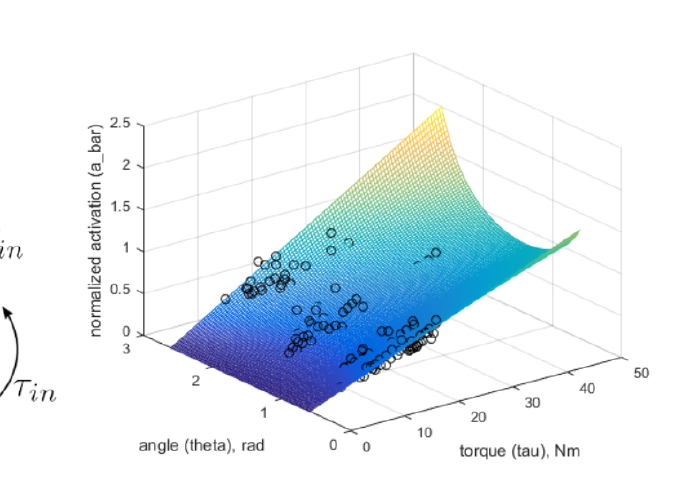 Left: Collection of sEMG, force, and motion capture data. Center: Simplified model of the elbow joint used in modeling. Right: Muscle force models can be fitted to a given subject via collection of activation, force, and angle data.
Left: Collection of sEMG, force, and motion capture data. Center: Simplified model of the elbow joint used in modeling. Right: Muscle force models can be fitted to a given subject via collection of activation, force, and angle data.
Sensor-Driven Musculoskeletal Dynamic Modeling
 Left: Collection of sEMG, force, and motion capture data. Center: Simplified model of the elbow joint used in modeling. Right: Muscle force models can be fitted to a given subject via collection of activation, force, and angle data.
Left: Collection of sEMG, force, and motion capture data. Center: Simplified model of the elbow joint used in modeling. Right: Muscle force models can be fitted to a given subject via collection of activation, force, and angle data.
Sensor-Driven Musculoskeletal Dynamic Modeling
Abstract
The creation of a descriptive human dynamical model useful in upper-limb prosthesis and exoskeleton control remains an open problem. We here present a framework that approaches model generation from a “sensor-driven” design perspective that explicitly avoids over-fitting parameters and minimally relies on literature values and biological assumptions. We further apply this framework to a simplified dynamical model of the human elbow and verify using synthetic data that the problem of fitting this model to a real system is well-posed. Lastly, we apply the same simplified model to real surface electromyography (sEMG) and contact force data of a single subject. While the dynamical model extracted from this data is biologically nonsensical, the results indicate that this framework represents a viable starting point from which to build more sophisticated fully-recoverable dynamical models.
